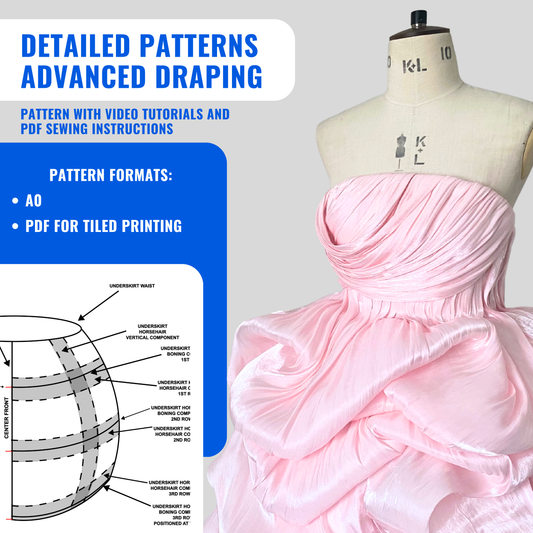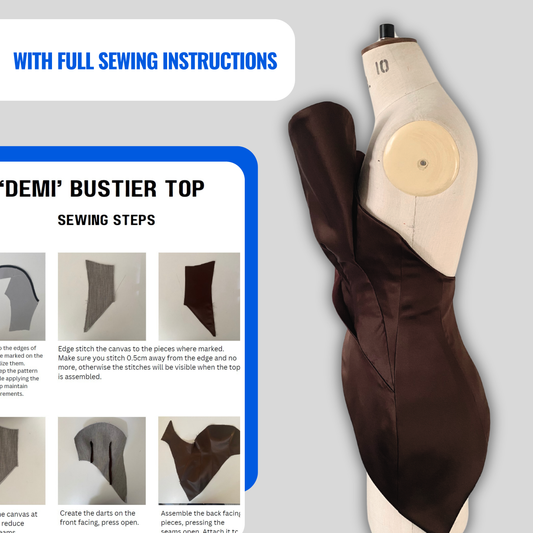Turn Your Drapes Into Perfect Patterns: Common Mistakes and Fixes
I’ve always loved draping. It’s the quickest way for me to turn an idea in my head into something real. Back at university, whenever I couldn’t sketch what I was imagining, I’d go straight to the mannequin and start draping. It worked beautifully for getting ideas out, but it’s a completely different story when you’re draping to create a garment.
There are many kinds of draping, and each serves a different purpose. Today, I want to talk about draping for pattern making and some mistakes I’ve made (more than once) so you don’t have to.

Mistake 1: Not Having a Foundation
When I started out as a Pattern Cutter, I used to drape straight onto the mannequin without a foundation, thinking I’d “fix balance and measurements later.” Big mistake.
Even if I’m not planning to line a garment, I almost always use a basic block underneath. It doesn’t have to be fitted; the shape just needs to reflect your intended silhouette. A foundation block keeps your drape balanced, gives you a reference point for the final pattern, and is simply easier to pin to. Of course, if you are draping something completely abstract, you might not go down that route, but it’s still recommended.
Bonus tip: Pin to the block, not directly to the dummy. It makes removing and refining your drape much smoother.

Mistake 2: Ignoring the Grainline
If you think grainlines don’t matter, think again. Fabric behaves completely differently on straight grain, cross grain, and bias.
Before every drape, mark your grainline. You can do it with pen, chalk, by pulling a thread, or pressing a crease—whatever your fabric allows. Over time, your eye gets better at reading the weave, but when in doubt, take a piece of fabric with the selvage and fold it to compare the fold quality with your draped piece. Fabrics usually fold more easily along the straight grain (though not always), but it’s still a good indicator.

Mistake 3: Skipping Notches and Annotations
After draping, it’s essential to mark every fold line, notch, and annotation before taking the fabric off the form. Once you start truing and turning your drape into a pattern, those marks become your roadmap.
If you skip this step, you’ll waste time later trying to remember which piece went where, and your balance points will vanish into thin air.

Mistake 4: Not Checking the Pattern
Just because it looked good on the stand doesn’t mean it’s right. Always check your pattern once it’s off the dummy—seam lengths, pleat directions, matching lines, everything.
Double-checking at this stage saves you from nasty surprises later, like mismatched seams or pleats that mysteriously shift.
Mistake 5: Not Re-Toiling
Ah, my personal trap. When I’m in a hurry, I skip the re-toile, and every time, I regret it.
A draped design can look perfect when pinned, but fabric behaves differently once stitched and pressed. Pleats change shape, bulk appears where you didn’t expect it, and proportions can shift.
Re-toiling isn’t a luxury; it’s part of the process. Skipping it isn’t a shortcut—it’s a detour straight to frustration.
Draping is one of the most creative, intuitive parts of fashion design, but turning that drape into a clean, balanced pattern takes discipline and technical awareness. The beauty is in the mix of art and accuracy.
If you’ve made any of these mistakes before, trust me, you’re in good company. I still catch myself rushing steps when I’m excited about a design. But every time I slow down and go through these foundations properly, the results remind me why it’s worth it.
Until next time,
Heni








